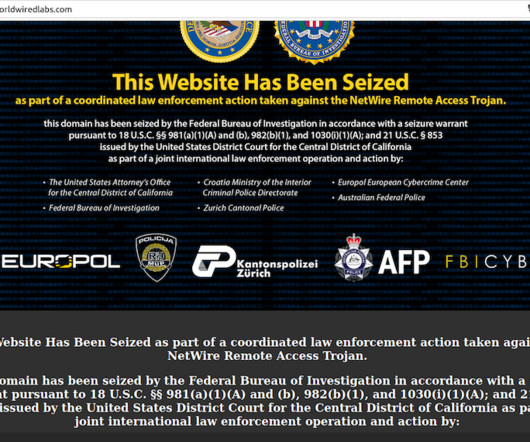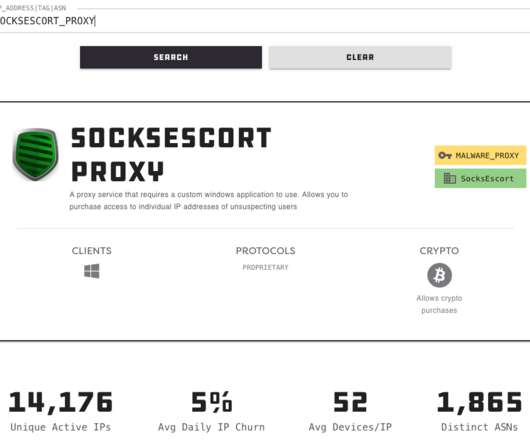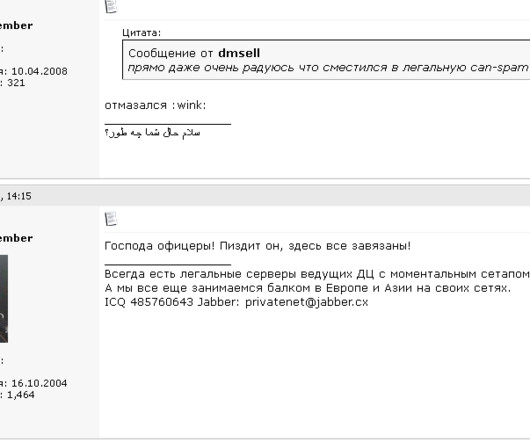Who’s Behind the NetWire Remote Access Trojan?
Krebs on Security
MARCH 9, 2023
A Croatian national has been arrested for allegedly operating NetWire , a Remote Access Trojan (RAT) marketed on cybercrime forums since 2012 as a stealthy way to spy on infected systems and siphon passwords. In October 2012, the WorldWiredLabs domain moved to another dedicated server at the Internet address 198.91.90.7,














Let's personalize your content